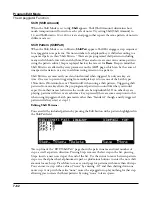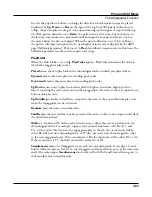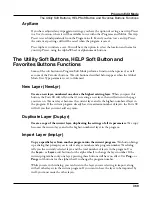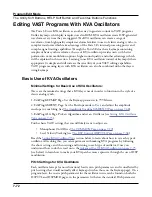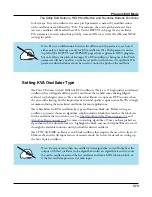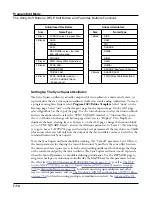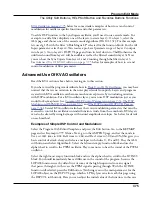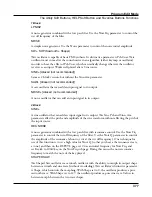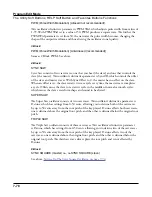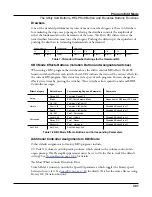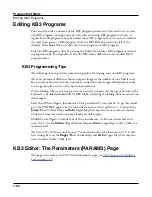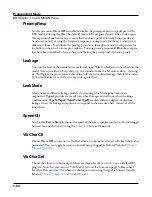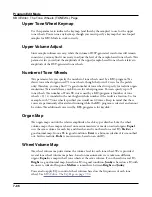
Program Edit Mode
The Utility Soft Buttons, HELP Soft Button and Favorites Buttons Functions
7-73
for keymaps. For each oscillator, its coarse pitch parameter is named by an abbreviation
of the oscillator name followed by “Pch.” For example, the coarse pitch parameter for a
saw wave oscillator will be called Saw Pch. On the DSPCTL sub page for any oscillator
Pch. parameter, you can adjust fine pitch by cents and Hertz, as well as KeyTrk and VelTrk
settings for pitch.
Setting KVA Oscillator Type
The Forte SE comes with 22 Different KVA oscillators. There are 11 high quality anti-aliased
oscillators (free of digital artifacts) and 11 oscillators that exhibit some aliasing (digital
artifacts) in the higher octaves. The anti-aliased oscillators use up more DSP resources than
the ones with aliasing, but the improvement in sound quality is quite noticeable. We strongly
recommend using the anti-aliased oscillators for most applications.
The tables below list KVA oscillators by type and function block size. Before setting an
oscillator, you must choose an algorithm which includes a block that matches the block size
for the oscillator that you wish to use. See
The Algorithm (ALG) Page on page 7-31
and
for more on selecting algorithms. Once you have picked an
algorithm with the desired block size, highlight the block and use the Alpha Wheel to scroll
through the available functions until you find the desired oscillator.
The SYNC SQUARE oscillator is an 8 block oscillator that requires the use of two layers (4
blocks each) and the Alt Input feature of cascade mode. See below for details on setting up
the Sync Square oscillator.
Note: Be sure to differentiate between the different pitch parameters, each used
either only for keymaps or only for KVA oscillators. The Pitch parameter on the
top left of the DSPCTL and DSPMOD pages always appears in VAST programs
but only affects the pitch of keymaps. If a KVA oscillator is being used, this Pitch
parameter will have no affect on the layer’s pitch, in which case the oscillator Pch.
parameter described above must be used to control the pitch of the oscillator.
Note: If you put more than one oscillator in an algorithm, you will only hear the
output of the last oscillator in the algorithm, unless an algorithm is used to route
the earlier oscillator around the last oscillator and into a MIX function block, or
if the last oscillator processes its audio input.




